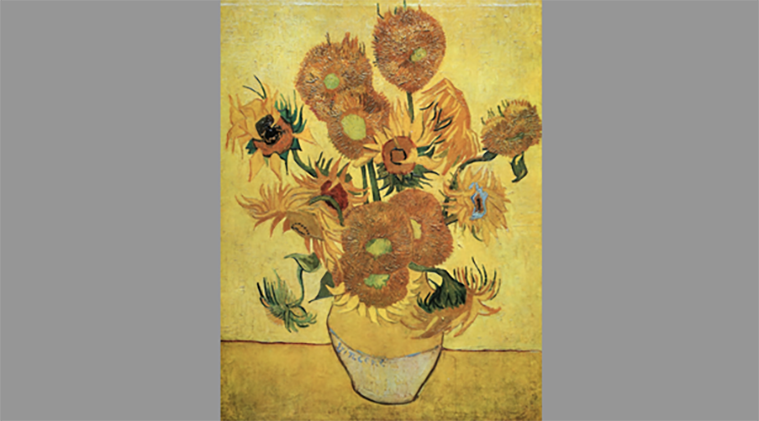
World

Banker’s heirs sue for restitution of famed Van Gogh painting
JTA – Heirs of a German-Jewish banker are suing a Japanese insurance company for the return of one of Vincent van Gogh’s famed Sunflowers or at least $750 million (R12.8 trillion) in punitive damages.
In December, Julius H Schoeps, Britt-Marie Enhoerning, and Florence Von Kesselstatt, the heirs of Paul von Mendelssohn-Bartholdy, filed a 98-page complaint with an Illinois federal court alleging that Mendelssohn-Bartholdy was forced to sell the painting in 1934 as the result of “racially exclusionary Nazi policies and concomitant coercion calculated to evict Jews from the economy and society of Germany”.
A Sompo Holdings representative told Courthouse News Service that the company “categorically rejects any allegation of wrongdoing and intends to defend its ownership rights of Sunflowers vigorously”. The company displays the painting in a museum in its Tokyo headquarters.
“It’s a matter of public record that Yasuda Fire & Marine Insurance Company [Sompo’s predecessor] purchased the Vincent van Gogh Sunflowers at public auction from Christie’s in London in 1987. For more than 35 years, the Sompo Museum of Fine Art in Tokyo, Japan, has proudly displayed Sunflowers,” the statement reads.
The complaint alleges that Yasuo Goto, the president of the Yasuda Fire & Marine Insurance Company, which was incorporated into Sompo Holdings in 2002, was aware of the painting’s previous owner when he purchased it at the Christie’s auction in 1987. It was sold for $39.9 million (R680.8 million).
In 2001, a Yasuda representative wrote to the Art Institute of Chicago ahead of an exhibition including the painting that the company was “deeply concerned”, and that its provenance hadn’t been further investigated. The company displayed Sunflowers at the institute anyway, and, according to the complaint, concealed the story behind its original sale from United States authorities in violation of the National Stolen Property Act of 1934.
Some experts have argued that the painting, the most famous in Van Gogh’s Sunflowers series, is a forgery.
Paul von Mendelssohn-Bartholdy was a member of the prolific German-Jewish Mendelssohn family, whose members include composer Felix Mendelssohn and Jewish philosopher Moses Mendelssohn. In the late 1700s, family members founded the Mendelssohn & Co banking house, which became the largest private bank in Berlin. Facing Nazi persecution, they were forced to close Mendelssohn & Co in 1938.
According to the complaint, Nazi laws that targeted Jewish banks crippled Mendelssohn-Bartholdy financially, forcing him to sell some works in his collection, which included pieces by Pablo Picasso, Vincent van Gogh, Pierre-Auguste Renoir, and Georges Braque. He died in Germany in 1935 of a heart attack.
The complaint is the latest in an ongoing saga as Mendelssohn-Bartholdy’s heirs seek restitution of his collection. Thus far, they have filed lawsuits against the Museum of Modern Art, the Guggenheim Museum, the Andrew Lloyd Webber Foundation, the National Gallery of Art in Washington, DC, and the German state of Bavaria for the restitution of five paintings by Pablo Picasso.
Settlements were reached in three of the cases while one, against the National Gallery of Art, resulted in the return of Picasso’s Head of a Woman to the family.











Simone
January 20, 2023 at 2:34 pm
Asjkenazi Jews are from khazar Khaganate realy.Also see Missing Link of Jews European Ancestry.
https://academic.oup.com/gbe/article/5/1/61/728117
Conclusions:
We compared two European-Jewish ancestry genetic models depicting mixed Khazarian-European-Middle Eastern and some Middle Eastern ancestry. Contemporary populations have been used as surrogates for the ancient Khazars and Judeans, and their relationship to European Jews has been compared through an extensive battery of genetic analyses. Our summary supports the Khazarian hypothesis depicting a large Near Eastern and Caucasus ancestry along with Southern European, Middle Eastern and Eastern European ancestors, commissioned with recent studies and oral and written traditions. We conclude that the genome of European Jews is a tapestry of ancient populations, including Judaized Khazars, Greco-Roman Jews, Mesopotamian Jews.